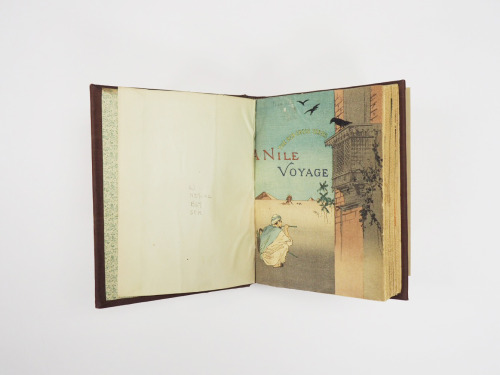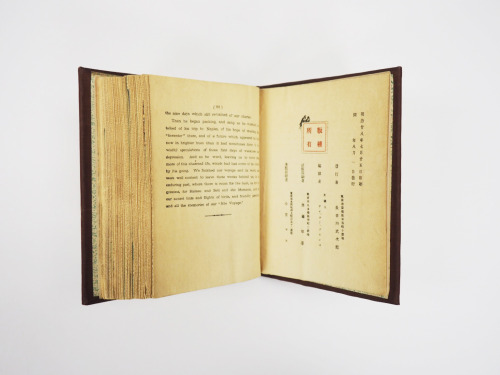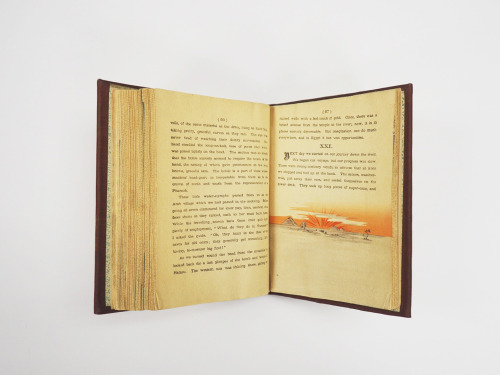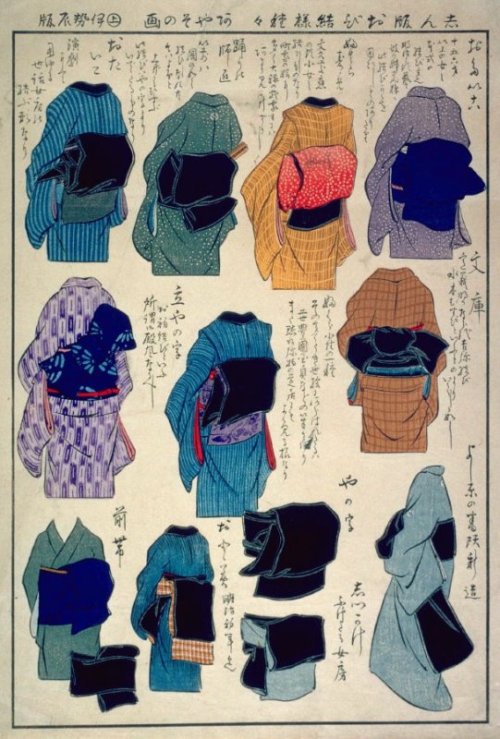Book Lovers Day - Free Aeronautics E-Books From NASA
Book Lovers Day - Free Aeronautics e-Books from NASA

Quieting the Boom

The Shaped Sonic Boom Demonstrator and the Quest for Quiet Supersonic Flight.
Download it HERE
Elegance in Flight

A comprehensive History of the F-16XL Experimental Prototype and its Role in our Flight Research.
Download it HERE
Probing the Sky

Selected National Advisory Committee for Aeronautics (NACA) Research Airplanes and Their Contributions to Flight.
Download it HERE
Cave of the Winds

The huge Langley Full-Scale Tunnel building dominated the skyline of Langley Air Force Base for 81 years (1930–2011). Explore how the results of critical tests conducted within its massive test section contributed to many of the Nation’s most important aeronautics and space programs.
Download it HERE
A New Twist in Flight Research

A New Twist in Flight Research describes the origins and design development of aeroelastic wing technology, its application to research aircraft, the flight-test program, and follow-on research and future applications.
Download it HERE
Sweeping Forward

Developing & Flight Testing the Grumman X-29A Forward Swept Wing Research Aircraft.
Download it HERE
Thinking Obliquely

Robert T. Jones, the Oblique Wing, our AD-1 Demonstrator, and its Legacy.
Download it HERE
The Apollo of Aeronautics

The fuel crisis of the 1970s threatened not only the airline industry but also the future of American prosperity itself. It also served as the genesis of technological ingenuity and innovation from a group of scientists and engineers at NASA, who initiated planning exercises to explore new fuel-saving technologies.
Download it HERE
X-15: Extending the Frontiers of Flight

X-15: Extending the Frontiers of Flight describes the genesis of the program, the design and construction of the aircraft, years of research flights and the experiments that flew aboard them.
Download it HERE
Ikhana

Delve into the story of the Ikhana, a remotely piloted vehicle used by NASA researchers to conduct Earth science research, which became an unexpected flying and imaging helper to emergency workers battling California wildfires.
Download it HERE
NASA’s Contributions to Aeronautics, Volume 1

This first volume in a two-volume set includes case studies and essays on NACA-NASA research for contributions such as high-speed wing design, the area rule, rotary-wing aerodynamics research, sonic boom mitigation, hypersonic design, computational fluid dynamics, electronic flight control and environmentally friendly aircraft technology.
Download it HERE
NASA’s Contributions to Aeronautics, Volume 2

Continue your journey into the world of NASA’s Contributions to Aeronautics with case studies and essays on NACA-NASA research for contributions including wind shear and lightning research, flight operations, human factors, wind tunnels, composite structures, general aviation aircraft safety, supersonic cruise aircraft research and atmospheric icing.
Download it HERE
Interested in other free e-books on topics from space, science, research and more? Discover the other e-books HERE.
Make sure to follow us on Tumblr for your regular dose of space: http://nasa.tumblr.com
More Posts from Philosophical-amoeba and Others

Paralyzed ALS patient operates speech computer with her mind
In the UMC Utrecht a brain implant has been placed in a patient enabling her to operate a speech computer with her mind. The researchers and the patient worked intensively to get the settings right. She can now communicate at home with her family and caregivers via the implant. That a patient can use this technique at home is unique in the world. This research was published in the New England Journal of Medicine.
Because she suffers from ALS disease, the patient is no longer able to move and speak. Doctors placed electrodes in her brain, and the electrodes pick up brain activity. This enables her to wirelessly control a speech computer that she now uses at home.
Mouse click
The patient operates the speech computer by moving her fingers in her mind. This changes the brain signal under the electrodes. That change is converted into a mouse click. On a screen in front of her she can see the alphabet, plus some additional functions such as deleting a letter or word and selecting words based on the letters she has already spelled. The letters on the screen light up one by one. She selects a letter by influencing the mouse click at the right moment with her brain. That way she can compose words, letter by letter, which are then spoken by the speech computer. This technique is comparable to actuating a speech computer via a push-button (with a muscle that can still function, for example, in the neck or hand). So now, if a patient lacks muscle activity, a brain signal can be used instead.
Wireless
The patient underwent surgery during which electrodes were placed on her brain through tiny holes in her skull. A small transmitter was then placed in her body below her collarbone. This transmitter receives the signals from the electrodes via subcutaneous wires, amplifies them and transmits them wirelessly. The mouse click is calculated from these signals, actuating the speech computer. The patient is closely supervised. Shortly after the operation, she started on a journey of discovery together with the researchers to find the right settings for the device and the perfect way to get her brain activity under control. It started with a “simple” game to practice the art of clicking. Once she mastered clicking, she focused on the speech computer. She can now use the speech computer without the help of the research team.
The UMC Utrecht Brain Center has spent many years researching the possibility of controlling a computer by means of electrodes that capture brain activity. Working with a speech computer driven by brain signals measured with a bathing cap with electrodes has long been tested in various research laboratories. That a patient can use the technique at home, through invisible, implanted electrodes, is unique in the world.
If the implant proves to work well in three people, the researchers hope to launch a larger, international trial. Ramsey: “We hope that these results will stimulate research into more advanced implants, so that some day not only people with communication problems, but also people with paraplegia, for example, can be helped.”



Ernst Mach, Chuck Yeager, and supersonic flight
Today is the 70th anniversary of the first supersonic flight. On 14 October 1947, Air Force Captain Charles Yeager piloted the experimental Bell X-1 plane named Glamorous Glennis and “broke the sound barrier,” reaching what scientists call “Mach 1.”
Yeager’s historic flight came thirty-one years after the death of Ernst Mach, the Austrian physicist and philosopher whose research on sound particles remained obscure until aviation capabilities began to approach the speed of sound. Mach lends his name to Mach numbers, used to describe faster-than-sound travel, and Mach angles, which measure the angle of the shock waves caused by flight. In addition to his work with sound, Mach’s rejection of Newton’s ideas on space and time influenced Albert Einstein’s theory of relativity.
Image credits: 1) Chuck Yeager next to experimental aircraft Bell X-1 Glamorous Glennis, 1940s. US Air Force, Public Domain via Wikimedia Commons. 2) Ernest Mach from the Journal of Physical Chemistry, Volume 40, 1902. H. F. Jütte. Uploaded by Armin Kübelbeck, Public Domain via Wikimedia Commons. 3) Chuck Yeager at Nellis Air Force Base on the 65th anniversary of his flight, 14 October 2012. Master Sgt. Jason Edwards, US Air Force, Public Domain via Wikimedia Commons.

Man with quadriplegia employs injury bridging technologies to move again—just by thinking
First recipient of implanted brain-recording and muscle-stimulating systems reanimates limb that had been stilled for eight years
Bill Kochevar grabbed a mug of water, drew it to his lips and drank through the straw.
His motions were slow and deliberate, but then Kochevar hadn’t moved his right arm or hand for eight years.
And it took some practice to reach and grasp just by thinking about it.
Kochevar, who was paralyzed below his shoulders in a bicycling accident, is believed to be the first person with quadriplegia in the world to have arm and hand movements restored with the help of two temporarily implanted technologies.
A brain-computer interface with recording electrodes under his skull, and a functional electrical stimulation (FES) system* activating his arm and hand, reconnect his brain to paralyzed muscles.
Holding a makeshift handle pierced through a dry sponge, Kochevar scratched the side of his nose with the sponge. He scooped forkfuls of mashed potatoes from a bowl—perhaps his top goal—and savored each mouthful.
“For somebody who’s been injured eight years and couldn’t move, being able to move just that little bit is awesome to me,” said Kochevar, 56, of Cleveland. “It’s better than I thought it would be.”
Kochevar is the focal point of research led by Case Western Reserve University, the Cleveland Functional Electrical Stimulation (FES) Center at the Louis Stokes Cleveland VA Medical Center and University Hospitals Cleveland Medical Center (UH). A study of the work was published in the The Lancet March 28 at 6:30 p.m. U.S. Eastern time.
“He’s really breaking ground for the spinal cord injury community,” said Bob Kirsch, chair of Case Western Reserve’s Department of Biomedical Engineering, executive director of the FES Center and principal investigator (PI) and senior author of the research. “This is a major step toward restoring some independence.”
When asked, people with quadriplegia say their first priority is to scratch an itch, feed themselves or perform other simple functions with their arm and hand, instead of relying on caregivers.
“By taking the brain signals generated when Bill attempts to move, and using them to control the stimulation of his arm and hand, he was able to perform personal functions that were important to him,” said Bolu Ajiboye, assistant professor of biomedical engineering and lead study author.
Technology and training
The research with Kochevar is part of the ongoing BrainGate2* pilot clinical trial being conducted by a consortium of academic and VA institutions assessing the safety and feasibility of the implanted brain-computer interface (BCI) system in people with paralysis. Other investigational BrainGate research has shown that people with paralysis can control a cursor on a computer screen or a robotic arm (braingate.org).
“Every day, most of us take for granted that when we will to move, we can move any part of our body with precision and control in multiple directions and those with traumatic spinal cord injury or any other form of paralysis cannot,” said Benjamin Walter, associate professor of neurology at Case Western Reserve School of Medicine, clinical PI of the Cleveland BrainGate2 trial and medical director of the Deep Brain Stimulation Program at UH Cleveland Medical Center.
“The ultimate hope of any of these individuals is to restore this function,” Walter said. “By restoring the communication of the will to move from the brain directly to the body this work will hopefully begin to restore the hope of millions of paralyzed individuals that someday they will be able to move freely again.”
Jonathan Miller, assistant professor of neurosurgery at Case Western Reserve School of Medicine and director of the Functional and Restorative Neurosurgery Center at UH, led a team of surgeons who implanted two 96-channel electrode arrays—each about the size of a baby aspirin—in Kochevar’s motor cortex, on the surface of the brain.
The arrays record brain signals created when Kochevar imagines movement of his own arm and hand. The brain-computer interface extracts information from the brain signals about what movements he intends to make, then passes the information to command the electrical stimulation system.
To prepare him to use his arm again, Kochevar first learned how to use his brain signals to move a virtual-reality arm on a computer screen.
“He was able to do it within a few minutes,” Kirsch said. “The code was still in his brain.”
As Kochevar’s ability to move the virtual arm improved through four months of training, the researchers believed he would be capable of controlling his own arm and hand.
Miller then led a team that implanted the FES systems’ 36 electrodes that animate muscles in the upper and lower arm.
The BCI decodes the recorded brain signals into the intended movement command, which is then converted by the FES system into patterns of electrical pulses.
The pulses sent through the FES electrodes trigger the muscles controlling Kochevar’s hand, wrist, arm, elbow and shoulder. To overcome gravity that would otherwise prevent him from raising his arm and reaching, Kochevar uses a mobile arm support, which is also under his brain’s control.
New Capabilities
Eight years of muscle atrophy required rehabilitation. The researchers exercised Kochevar’s arm and hand with cyclical electrical stimulation patterns. Over 45 weeks, his strength, range of motion and endurance improved. As he practiced movements, the researchers adjusted stimulation patterns to further his abilities.
Kochevar can make each joint in his right arm move individually. Or, just by thinking about a task such as feeding himself or getting a drink, the muscles are activated in a coordinated fashion.
When asked to describe how he commanded the arm movements, Kochevar told investigators, “I’m making it move without having to really concentrate hard at it…I just think ‘out’…and it goes.”
Kocehvar is fitted with temporarily implanted FES technology that has a track record of reliable use in people. The BCI and FES system together represent early feasibility that gives the research team insights into the potential future benefit of the combined system.
Advances needed to make the combined technology usable outside of a lab are not far from reality, the researchers say. Work is underway to make the brain implant wireless, and the investigators are improving decoding and stimulation patterns needed to make movements more precise. Fully implantable FES systems have already been developed and are also being tested in separate clinical research.
Kochevar welcomes new technology—even if it requires more surgery—that will enable him to move better. “This won’t replace caregivers,” he said. “But, in the long term, people will be able, in a limited way, to do more for themselves.”
The investigational BrainGate technology was initially developed in the Brown University laboratory of John Donoghue, now the founding director of the Wyss Center for Bio and Neuroengineering in Geneva, Switzerland. The implanted recording electrodes are known as the Utah array, originally designed by Richard Normann, Emeritus Distinguished Professor of Bioengineering at the University of Utah.
The report in Lancet is the result of a long-running collaboration between Kirsch, Ajiboye and the multi-institutional BrainGate consortium. Leigh Hochberg, a neurologist and neuroengineer at Massachusetts General Hospital, Brown University and the VA RR&D Center for Neurorestoration and Neurotechnology in Providence, Rhode Island, directs the pilot clinical trial of the BrainGate system and is a study co-author.
“It’s been so inspiring to watch Mr. Kochevar move his own arm and hand just by thinking about it,” Hochberg said. “As an extraordinary participant in this research, he’s teaching us how to design a new generation of neurotechnologies that we all hope will one day restore mobility and independence for people with paralysis.”

Four years of failed harvests (1695, 1696, and 1698–99) resulted in severe famine and depopulation, particularly in the north of Scotland. Starvation killed 5 to 15 percent of the Scottish population, but in areas such as Aberdeenshire, death rates reached 25 percent.
Rarely has a natural disaster had such wide-ranging historical consequences as did the famine that struck Scotland in the mid-1690s. Little more than a decade later, as Scotland’s social elites despaired about their nation’s grinding poverty and profound structural weakness, the country’s Parliament finally voted away its age-old independence in favor of unification with England, previously Scotland’s bitterest and most enduring enemy.
The author of this sermon was a very colorful figure. A Scottish Presbyterian minister denounced as a rebel in 1674, he was restored next year but arrested again the following February. Later he was arrested for refusing to pray for the Prince of Wales, but again released. His matrimonial adventures were no less robust than his professional career. He was married seven times and fathered at least nine children.
David Williamson (1636- 1706). Scotland’s sin, danger, and duty: faithfully represented in a sermon preach’d at the West-Kirk, August 23d, 1696: being a solemn fast-day upon occasion of the great dearth and famine. Rare BT162.F3 W54 1720
im putting together a couple of scottish folk mixes bc that’s what i do and im honestly curious if anyone in my country has ever been unequivocally happy about anything ever




Ancient Egypt as seen through western eyes is mostly monumental and remote, distant in time and overwhelming in scale. The earliest western illustrations and photographs of Egypt regularly emphasized size and stillness; romantic artists of the nineteenth century frequently placed people in vast desert landscapes—the figures small and insignificant, lost in the deep antiquity of an unchanging land.
This grand vision of Egypt is so firmly fixed in western culture that discovering a different interpretation comes as a revelation. Fortunately, the Brooklyn Museum Wilbour Library of Egyptology owns a rare treasure that offers an alternate view. A Nile Voyage of Recovery, by Charles and Susan Bowles was published in Japan by Hasegawa Takejirō [長谷川武次郎 in 1896. Hasegawa was Japanese publisher active in the late nineteenth century who specialized in books in European languages, often for Japan’s tourist trade and resident foreign community, which included many English missionaries. The volume is part of the Red Cross series. During this time period, the Red Cross was active in setting up libraries and creating publications for soldiers in hospitals and recovery centers around the world.
Many of Hasegawa’s early books were in the form of chirimen-bon (ちりめん本) or crêpe paper books. Chirimen, or crepe, is a Japanese textile with a soft, slightly wrinkly texture that’s often used in Japan to make kimonos, or for wrapping cloth. Hasegawa used the material to produce small, delicate books that can be held in the hand with the pages unfolding easily like fabric.
Our chirimen-bon of A Nile Voyage of Recovery is illustrated with graceful, color woodblock prints of Egyptian scenes and adorned with exquisite typography. The images are gentle and intimate, emphasizing details and delicate color. Even a portrayal of the great pyramid gives more page-room to rays of light and the sun rather than the monuments. The Sphinx does not dominate; it’s rather an integral part of the landscape.
Why study this human-scale Egypt? Because the purpose of art after all is to unsettle the conventional view—and whenever we see the world through other eyes, we see something new.
Posted by Roberta Munoz Photos by Brooke Baldeschwiler
+heroes of nusantara: multatuli
YES, I, Multatuli, “who have suffered much,”—I take the pen. I do not make any excuses for the form of my book,—that form was thought proper to obtain my object…. I will be read! Yes, I will be read. I will be read by statesmen who are obliged to pay attention to the signs of the times; by men of letters, who must also look into the book of which so many bad things are said; by merchants, who have an interest in the coffee auctions; by lady’s-maids, who read me for a few farthings; by governors-general in retirement; by ministers who have something to do; by the lackeys of these Excellencies; by mutes, who, more majorum, will say that I attack God Almighty, when I attack only the god which they made according to their own image; by the members of the representative chambers, who must know what happens in the extensive possessions over the sea which belong to Holland….
Ay, I shall be read!

Eduard Douwes Dekker was born in Amsterdam, March 2nd 1820. His father was a ship’s captain and intended for his son to have a career in trade. This humdrum prospect disgusted Douwes Dekker and in 1838 he obtained a post as a civil servant on the island of Java. During the period between 1848 and 1851 Douwes Dekker eventually rose to serve as assistant resident in various regencies in the Indonesian archipelago including Natal, North Sumatra, Manado in Sulawesi and Ambon in the Moluccas. In 1857 he was transferred to Lebak, in the Bantam residency of Java (now Banten province). By this time, however, all the secrets of Dutch administration were known to him, and he had begun to openly protest about the abuses of the colonial system. Consequently, he was threatened with dismissal from his office for his openness of speech. Douwes Dekker resigned his appointment and returned to the Netherlands.
He was determined to expose in detail the scandals he had witnessed, and he began to do so in newspaper articles and pamphlets. Little notice, however, was taken of his protestations until, in 1860, he published his novel Max Havelaar under the pseudonym of Multatuli. Douwes Dekker’s new pseudonym, which is derived from Latin, means, “I have suffered much”, or, more literally “I have borne much” referring to himself, as well as, it is thought, to the victims of the injustices he saw. An attempt was made to suppress the inflammatory book, but in vain; it was read all over Europe. Apologists for colonialism accused Douwes Dekker’s horrific depictions of being exaggerated.

[ his statue in amsterdam ]
Although it was translated into English in 1868, the text wasn’t available in the author’s home country until over a century later in 1972. Collectively, Multatuli’s Max Havelaar has been translated into 34 different languages worldwide since its initial publication. Credited as the stirring initiation of the nationalist movement responsible for the termination of Dutch colonization of Indonesia following World War II, Max Havelaar’s legacy is not confined to literary accomplishment, but can be considered a work of great political success and inspired social liberation. Max Havelaar’s influence on the national movement ultimately culminated in the passionate command to end decolonization worldwide. The story of Max Havelaar illuminates the inhumane and political injustices brutally imposed upon the native peoples of the region.
Sigmund Freud listed Multatuli as one of his favorite writers. Multatuli’s brother, Jan Douwes Dekker, was the grandfather of Ernest Douwes Dekker (also known as Danudirja Setiabudi, a National Hero of Indonesia). There is a museum for him in Amsterdam. Multatuli is also known as the person who coined the term emerald of equator, a poetic nickname of Indonesia.

This book is an introduction…. I shall increase in strength and sharpness of weapons, according as it may be necessary. Heaven grant that it may not be necessary!… No, it will not be necessary! For it is to thee I dedicate my book: WILLIAM THE THIRD, King, Grand Duke, Prince,… more than Prince, Grand Duke, and King,… EMPEROR of the magnificent empire of INSULIND, which winds about the equator like a garland of emeralds!… I ask THEE if it be thine IMPERIAL will that the Havelaars should be bespattered with the mud of Slymerings and Drystubbles; and that thy more than thirty millions of SUBJECTS far away should be ill treated and should suffer extortion in THY name!
source: wikipedia; culture trip
quotes from bartleby, excerpt of max havelaar
further reading: paper on multatuli
-
 gooeydecimal liked this · 1 year ago
gooeydecimal liked this · 1 year ago -
 thenatureofbears reblogged this · 1 year ago
thenatureofbears reblogged this · 1 year ago -
 dareyoutoleap liked this · 4 years ago
dareyoutoleap liked this · 4 years ago -
 innerfa18eww2tarawadean liked this · 4 years ago
innerfa18eww2tarawadean liked this · 4 years ago -
 skip198427 liked this · 4 years ago
skip198427 liked this · 4 years ago -
 justfuckingmasterpostsbcimamess reblogged this · 4 years ago
justfuckingmasterpostsbcimamess reblogged this · 4 years ago -
 samwiseton reblogged this · 4 years ago
samwiseton reblogged this · 4 years ago -
 raincreekrain reblogged this · 4 years ago
raincreekrain reblogged this · 4 years ago -
 samwiseton liked this · 4 years ago
samwiseton liked this · 4 years ago -
 logwire liked this · 4 years ago
logwire liked this · 4 years ago -
 gaetanopezzella liked this · 4 years ago
gaetanopezzella liked this · 4 years ago -
 parexocoetus liked this · 4 years ago
parexocoetus liked this · 4 years ago -
 saameann reblogged this · 5 years ago
saameann reblogged this · 5 years ago -
 hitorimas liked this · 5 years ago
hitorimas liked this · 5 years ago -
 gaberoothekangaroo reblogged this · 5 years ago
gaberoothekangaroo reblogged this · 5 years ago -
 dub-psychosis reblogged this · 5 years ago
dub-psychosis reblogged this · 5 years ago -
 dub-psychosis liked this · 5 years ago
dub-psychosis liked this · 5 years ago -
 bexhudson-blog liked this · 5 years ago
bexhudson-blog liked this · 5 years ago -
 bexhudson-blog reblogged this · 5 years ago
bexhudson-blog reblogged this · 5 years ago -
 monsters--babey liked this · 5 years ago
monsters--babey liked this · 5 years ago -
 soullessorionstars liked this · 5 years ago
soullessorionstars liked this · 5 years ago -
 the-flying-trex liked this · 5 years ago
the-flying-trex liked this · 5 years ago -
 jack-waggon reblogged this · 5 years ago
jack-waggon reblogged this · 5 years ago -
 jack-waggon liked this · 5 years ago
jack-waggon liked this · 5 years ago -
 chocolateismynemesis reblogged this · 5 years ago
chocolateismynemesis reblogged this · 5 years ago -
 storiesthatgiveushope liked this · 5 years ago
storiesthatgiveushope liked this · 5 years ago -
 mirkwood-spider-express reblogged this · 5 years ago
mirkwood-spider-express reblogged this · 5 years ago -
 mirkwood-spider-express liked this · 5 years ago
mirkwood-spider-express liked this · 5 years ago -
 tinselinsect reblogged this · 5 years ago
tinselinsect reblogged this · 5 years ago -
 lilacgriffinchainsaw liked this · 5 years ago
lilacgriffinchainsaw liked this · 5 years ago -
 noisymentalitystarlight reblogged this · 5 years ago
noisymentalitystarlight reblogged this · 5 years ago -
 rebelleader47 liked this · 5 years ago
rebelleader47 liked this · 5 years ago -
 violetblot liked this · 5 years ago
violetblot liked this · 5 years ago
A reblog of nerdy and quirky stuff that pique my interest.
291 posts







